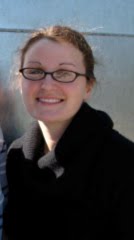 Hi everyone! I’m Clotilda BeGood, Cornelius’ cousin. This week is National Engineering Week so the folks at the Arkansas Discovery Network asked me to introduce some exemplary women in the world of engineering.
Hi everyone! I’m Clotilda BeGood, Cornelius’ cousin. This week is National Engineering Week so the folks at the Arkansas Discovery Network asked me to introduce some exemplary women in the world of engineering.
First I thought I’d explain a bit about what engineering is. It is such an incredibly broad field and involves taking concepts from math and science to create things – anything from a new package for your gum to wind turbines. Engineering is a huge field, encompassing a wide range of industries. You may not even realize an engineer has been to work, because most of their work is behind the scenes.

Some very interesting women have made a career out of engineering. One of them, Leah Buechley, is featured in the Network’s exhibit, Science & Art. She blends her knowledge of electronics, programming and sewing to engineer e-textiles that blink, flash and buzz. (check out her shirt with blinking lights!) You can learn more about Leah Buechley next week in a “Meet the Artists” blog post, or at http://hlt.media.mit.edu/:.
Next up is Yvonne Brill. She is an Aerospace Consultant (how cool would that be?!). She began her career in 1945, as a rocket propellant chemist on a project to design and launch an unmanned, Earth-orbiting satellite. Later, she developed the concept for a new rocket engine — an electrothermal hydrazine thruster. She was the only woman of technology at the time working in rocket propulsion systems. She has a bachelor’s degree in mathematics and a master’s in chemistry, so if you enjoy either of those subjects, and are intrigued with space travel, you may be able to follow in her footsteps. Watch this video and hear Brill’s overview of part of her unique and fascinating career.

Biomedical Engineer Heidi Koschwanez designs experiments to solve a real-life medical problem – how to prevent the body from rejecting glucose sensors so they can last in the body longer than a few days. Glucose sensors are little machines that figure out how much sugar (also called glucose) is in your blood. People with diabetes need to check what their blood sugar is often (3-4 times a day) so they don’t get sick. These little sensors help make checking their blood sugar easy. Find out more about her and other great women engineers at www.engineeringgirl.org!I hope you enjoy reading about these and other women in engineering. I’ll come back again to talk to you more about me and what great fun engineering can be.



 Here’s your chance to be an engineer and design your own dream roller coaster! Try to make it fast, fun and exciting, but don’t lose your marbles (I mean, your passengers)!
Here’s your chance to be an engineer and design your own dream roller coaster! Try to make it fast, fun and exciting, but don’t lose your marbles (I mean, your passengers)!

 February 20 – 26 is National Engineering Week. If you have an engineer (or two) in your life, hug them. They do important work, like designing my spaceship to travel the universe in search of fresh sources of Nostradimum. Without engineers, I would just have to satisfy myself with taking over the world, but now I can dream much bigger — I’m going to take over the universe!!!
February 20 – 26 is National Engineering Week. If you have an engineer (or two) in your life, hug them. They do important work, like designing my spaceship to travel the universe in search of fresh sources of Nostradimum. Without engineers, I would just have to satisfy myself with taking over the world, but now I can dream much bigger — I’m going to take over the universe!!!